“In the cherry blossom's shade
there's no such thing
as a stranger.”
―Kobayashi Issa
Embodying a calm and simple elegance, the cherry blossom, also known as the Japanese cherry or sakura (桜 or 櫻; さくら or サクラ ) is Japan’s official national flower and it’s easy to see why. For a few short weeks a year, these trees envelop the country with their stunning pink blooms and sweet fragrance of which viewing them has become a long-standing part of Japanese culture and its traditions. While Japan has become synonymous with cherry blossom, the flowering tree is beloved all over the world.
Related: Japan’s Cherry Blossom Season in Light of the Pandemic
Scientific Information
Within the Prunus genus, there are an estimated 400 different species and within the ornamental types of cherry blossoms, the Cerasus, there are around 100 species. The majority of cherry blossom species grown are not wild but have been cultivated for viewing.
Cherry blooms are known for their stunning flowers but they generally only bloom for one to two weeks per year.
Cherry Blossom Origins
Cherry blossoms are believed to have originated in the Himalayas in China's territory which then found its way to Japan in the Tang Dynasty (618-907).
Cherry blossoms can be found around the world, particularly in regions of the Northern Hemisphere and with temperature climates. Countries that grow cherry blossoms include Japan, Korea, China, Nepal, India, several countries in northern Europe, North America and more.
Related: Where to See Cherry Blossoms in Hong Kong
Cherry Blossom History
In Japan, hanami is a centuries-old practice of viewing cherry blossoms, usually while sitting and eating and drinking underneath them. This practice started during the Nara period (710–794) and it was a custom that, at first, was limited to the elite of Japan’s Imperial Court. It eventually spread to the samurai and then the common people by the Edo period.
In the early 1900s, Japan gifted the US over 3000 cherry blossom trees to commemorate the nation’s friendship which is how the US received its first cherry blossoms and began cultivating them. Widespread cultivation also began in the UK around the same time.
In many East Asian cuisines, such as Chinese, Japanese, Korean and Vietnamese the fruit of the cherry blossom tree is used in juices, flavouring for alcohol, as well as in pickles, sauces, and even in traditional medicines.
Cherry Blossom Symbolism and Meaning
In general, cherry blossoms have come to mark the end of winter and the beginning of spring. In Japan, while the cherry blossom currently represents renewal and optimism, it was once associated with war.
The blooms of the cherry blossom wither quickly, representing a fleetness that sat with Buddhist principles in that something must be enjoyed at the moment before time runs out. This pertained to the military because soldiers were told it was honourable to die like falling cherry petals. This was an especially strong sentiment during Japan’s imperial expansion but it also carried over into WWII. Cherry blossoms have also been planted to console the souls of dead soldiers. While the military meanings have not stayed their symbolism for the fleetness of life has remained.
In China, cherry blossoms can represent love as well as female strength, sexuality, and beauty. In the US, as the trees were a gift from Japan, they have come to symbolise tranquillity and peace.
Cherry Blossom Types and Colour Varieties
Cherry blossoms are most known for their pink to red colour but few rare varieties can be grown in shades of white, yellow, and green.
Prunus yedoensi, the Yoshino Cherry
The most well-known variety of cherry blossom is the Somei Yoshino, the Yoshino cherry. It was cultivated in the mid-to-late 19th century which was near the end of the Edo period and the beginning of the Meiji period. The blooms of the Yoshino contain five petals and are pink-white in colour. It is considered one of the most popular types of cherry blossoms as flowers are so intense and noticeable due to the leaves not coming in until after the flowers have finished blooming. This type of cherry blossom usually blooms in Tokyo in early April.
Image by 萩原 浩一 from Pixabay
Prunus kanzakura, Kawazuzakura
The Kawazuzakura cherry blossom is a cherry blossom that blooms before the arrival of spring and is one of the first types to bloom. They generally flower in late February to early March. The Kawazuzakura is a natural hybrid between the Oshima cherry and the Prunus campanulate variety. The Kawazu is famous for its deep pink blooms. While less common in much of Japan it grows in large numbers in Kawazu in which a festival is held every year to herald its arrival.
Prunus serrulate, Gioiko Koidz (Gyoiko)
The Gyoiko cherry blossom is a rare type of ornamental cherry blossom that has green flowers. It was developed in the Edo period of Japan. After the flowers have finished blooming, the flower’s middle becomes streaked with red before the flower falls. Even though it is rare, there are still around 100 different places in Japan where this cherry blossom tree can be viewed.
Prunus serrulate, Kanzan
The Kanzan or Sekiyama is one of the most popular ornamental cherry blossom varieties, especially in Japan, Europe, and North America. One flower can contain as many as 30 to 50 vibrant pink petals that are nicely contrasted by its coppery brown leaves.
Cherry Blossoms in Flower Arrangements and Inspired Alternatives
Due to the short lifespan of a cherry blossom bloom, they’re not generally used in florist’s flower arrangements. However, for the time that they are in bloom, they make for stunning flower arrangements if you can time it right. You can also use a few alternatives to get the same feel and colour from some other flower types that will last much longer.
Cherry Blossom Flower Arrangements
*Cherry blossom pair wonderfully with the full bloom of the peony and the two complement each other’s colours and contrast nicely in shape.
*Cherry blossoms also pair nicely with sweet peas and make for a very fragrant bouquet.
*Cherry blossoms make striking stand-alone arrangements as well and can make for ideal centrepieces, wreaths, archways, and more.
Cherry Blossom Flower Arrangement Alternatives
*Peonies-have a similar colour to the cherry blossom.
*Hydrangeas-are another popular spring and summer flower in Japan and grow just as vibrantly as cherry blossoms.
*Viburnum-has a lacey and bunched appearance that is similar to the cherry blossom.
*Orchids-having a similar vibrancy to cherry blossoms, orchids are a good alternative for flower arrangements.
*Lilacs-another stunning spring flower, lilacs grow in beautiful shades of pink and purple and give off their own delicate scent.
Cherry Blossom Garden Care
Regardless of what variety you want to plant, cherry blossom trees require a lot of sunlight so be sure to plant the tree in an area that has access to at least 6 hours of sunlight a day. The soil needs to be rich and fertile with good drainage for proper growth. Also, be sure that you have enough space for your tree as most flowering cherry blossom trees can grow between 15 and 30 ft in height with an equal measure for its canopy. Once a tree is planted and settled, it requires very little care. The tree will generally grow at a rate of 1 to 2 feet per year and will only need to be watered during dry spells during the summer.
Additional Cherry Blossom Garden Tips
-Plant the tree after the last frost.
-Space the tree 10 to 20 feet from any other trees or foliage.
-Add compost into the hole before planting the tree.
-When planting, make sure the top of the roots are at the same level as the soil.
-Water and fertilize thoroughly after planting.
-Avoiding pruning the tree unless necessary. If you do prune, make sure it is between May to August while it is actively growing.
Interesting Facts About Cherry Blossoms
*In Washington, DC, USA it is illegal to break off branches from cherry blossom trees.
*In Amsterdam's Amsterdamse Bos, each one of their 400 cherry blossom trees has been individually named.
*Cherry blossom petals are edible.
*Climate change appears to make cherry blossoms bloom earlier and earlier each year.
*In 2018 in LEGOLAND, Japan, a Guinness World Record was set for the largest LEGO brick cherry blossom tree. The tree stood 14 feet tall, weighed over 7000 pounds, and contained more than 800,000 LEGO bricks.
*Cherry blossom trees can live between 20-40 years with some species reporting much longer lifespans.
This is a Hong Kong GGB original 'Flower Facts: All About Cherry Blossoms' blogpost.

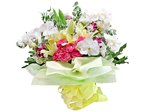
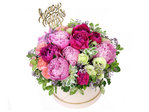
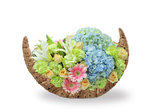

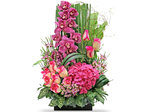
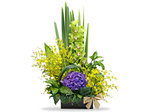

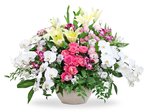


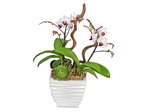
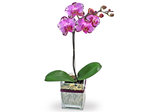

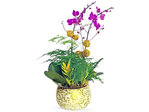
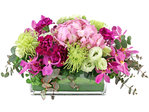

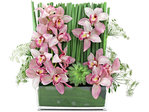

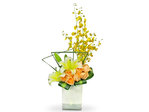
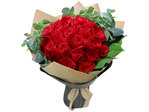
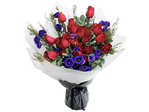



 Share
Share Tweet
Tweet +1
+1  Pin it
Pin it Post
Post  Weibo
Weibo Review
Review

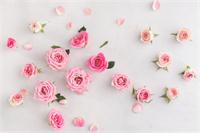
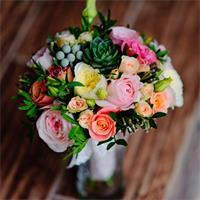
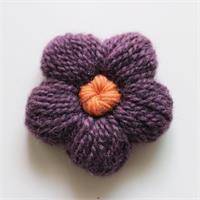
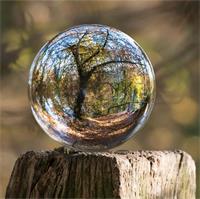

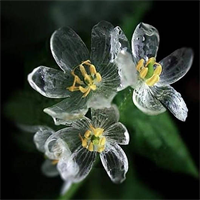
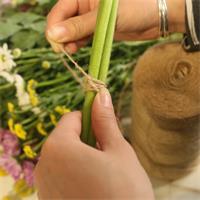
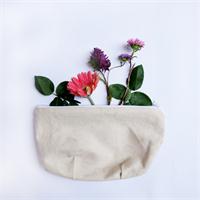



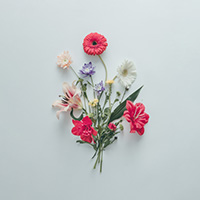
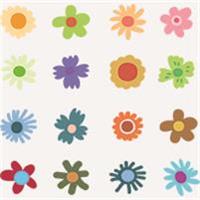
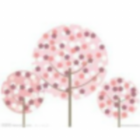



 Diwali Gifts
Diwali Gifts 
 ▶
▶